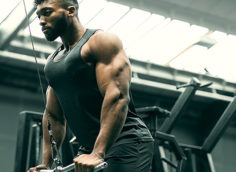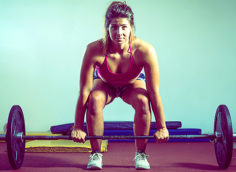Less Pain, About the Same Gain
You roll up to the gym after a long day sitting at work. You know you need to loosen up, but that foam roller is always so painful. Is all that pain worth the increase in flexibility? Do you have to feel like you're destroying your muscle to see the benefits of increased range of motion? This study suggests that less pain equals similar gain.
The Study
The study looked at eight males and eight females that participated in resistance or aerobic exercise at least three times a week and had no previous foam rolling experience. The subjects underwent a familiarization session on the roller followed by three sessions separated by 48 to 96 hours.
Each session began with finding the subjects' maximum rating of perceived pain for that day. They added pressure to the foam roller until the subjects couldn't tolerate it anymore. This value was a 10 RPP. The low pressure rolling trial was about 50% of this force, the moderate was 70%, and the heavy was 90%.
Single-leg drop jumps, maximum voluntary contractions for the knee flexors (hamstrings) and extensors (quads), and the active and passive range of motion for the knee extensors were analyzed. The foam rolling for each of the trials consisted of a 4-second loop from the top of the knees to the crease of the hips and back for 60 consecutive seconds.
The Results
- Active range of motion was significantly greater than the second pre-test value following the heavy load foam rolling protocol.
- Passive range of motion was significantly greater than the second pre-test value following the moderate and heavy load foam rolling protocol.
- Drop jump performance wasn't significantly different between the foam rolling trials and neither was MVIC.
- There was a significant correlation between the active range of motion and foam rolling protocols that favored the heavy protocol.
What This Means to You
- You don't need to worry about significant drops in strength or power following foam rolling, and it's a great tool to use before a workout to increase range of motion.
- Maximal amounts of pressure and pain doesn't seem necessary to get the desired effect from foam rolling either.
- Lastly, you don't need to spend crazy amounts of time foam rolling to enjoy the benefits of an increased range of motion.
Reference
- Grabow, L. et al. (2017). Higher Quadriceps Roller Massage Forces Do Not Amplify Range-of-Motion Increases Or Impair Strength or Jump Performance. The Journal Of Strength and Conditioning Research. doi:10.1519/JSC.0000000000001906





